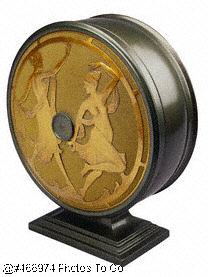One only needs to closely examine the character of Cinna the poet to understand the play's central theme. Cinna the poet, a character usually overlooked and neglected, shares a name with one of the conspirators. Near the end of Act III, the Roman mob, enraged by Marc Antony's speech, hunt down Cinna the poet and beat him, only because the mob recognized his name. As we, the audience and readers know, Cinna the poet is completely innocent.
Many scholars have noted the role of poets in resolving historical context. In an article entitled "The Chaotic History Making of Elizabethan England," published in a 1976 issue of Shakespeare Quarterly, Elizabethan historicist Howard Brody states that "the poet, as Shakespeare was well aware, has always been a central figure. The fact that Cinna appears in Act III, the play's middle act, can be no coincidence. Clearly, Shakespeare demonstrates how the poet's power can threaten political enterprise. That's why Cinna the poet, not Cinna the conspirator, must necessarily die. By killing the poet, we kill all opportunities for the poet to celebrate a political figure through writing" (53-54).
The play also maintains a high degree of imagery, and it's commonly known that poetry is a form of telling stories through imagery. This is the link between Cinna the poet and the play's metaphors. Perhaps the most striking bit of imagery occurs in Act II with Calpurnia's dream. Here, Decius Brutus resolves Caesar's conflict, which is, namely, to decide whether or not he should go forth to the senate house. This image/poem has been commented on by many scholars, most notably Henry Grainsblate, who published an article in Shakespeare Quarterly called "The Image/Poet connection in Julius Caesar." He writes that "Calpurnia's dream is clearly the poem that Cinna never had an opportunity to write. We can also see the danger in having different interpretations, as how Decius Brutus changes the meaning. This is why the mob must kill the poet. How can Rome stand to see the publishing of poetry that cannot be interpreted more authoritatively than a dream?" 
A medallion molded after an ancient Roman drachma. for related topics, see "Dream Dictionary" This article contributed by Jane Turner. |

